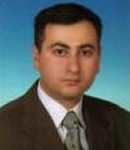
Plenary Lecture
Finite Element Analysis (FEA) of the Permanent Magnet (PM) Generators with the Multiple Stators

Associate Professor Erol Kurt
Gazi University
Faculty of Technology
Department of Electrical & Electronics Engineering
Ankara, TURKEY
E-mail: ekurt@gazi.edu.tr
Abstract: As a result of increasing trends on the wind energy applications, the explorations on different types of generators take attention world-widely. While many efforts have been given on modeling the new topologies of the electric machines, the cogging torque and phase voltage ripples have been main problems among the scientific manners. Since the multiple stator generators (MSGs) with permanent magnets (PMs) have higher energy densities compared to the other commercial generator systems, finite element analysis (FEA) of such generators shed a light on design optimization techniques on wind-related renewable energy explorations. On the other hand, PM generators with multiple stator systems can have minimal cogging torque values, if an appropriate design can be realized. In fact, the radially and angularly directed flux lines can help to minimize the undesired ripples and torques. According to the detailed analyses, the field morphology can have different orientations as also known from the claw pole machines, however the heating, loses and signal distortions become the main problems. With this work, a comparison between two new multiple stator generators is presented and some operational aspects are investigated in terms of finite element analysis (FEA).
Brief Biography of the Speaker: Dr. Erol KURT completed his undergraduate studies at Gazi University, Department of Physical Education in 1998 and took his M. Sc. degree from the Institute of Science & Technology of the same university in 2001. He was awarded by an European Graduate College stipendium during his Ph. D study at the Institute of Physics & Mathematics of Bayreuth University in Germany. He completed his Ph. D. degree in 2004 on the instabilities of rotating magnetic fluids. Then, he worked in Turkish Atomic Energy Authority R&D Department, Fusion Division for 3 years. Beginning from the middle of 2009, he was assigned to the position of Associate Professor at Technology Faculty of Gazi University in Ankara. His main teaching and research areas include nonlinear phenomena in electrical/electronic circuits, electric machine design, mechanical vibrations, chaos, plasmas, fusion and magnetohydrodynamics. He has authored or co-authored many scientific papers and the technical chairman to the serial conference of Int. Conf. Nuclear & Renewable Energy Resources (NuRER) and the chairman to European Conf. and Workshop on Renewable Energy Systems (ECRES and EWRES). He has been the guest editor of several special issue journals and the editor of TUBAV Journal of Science from 2011 September.